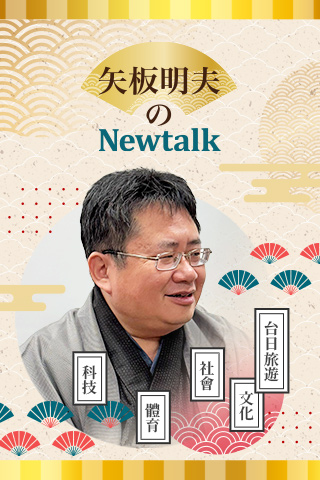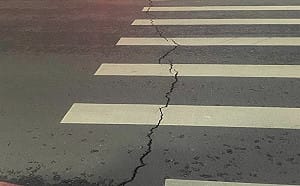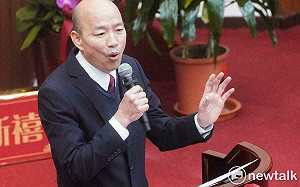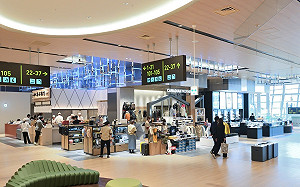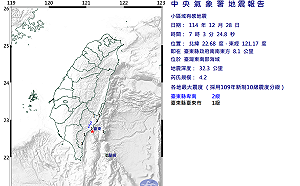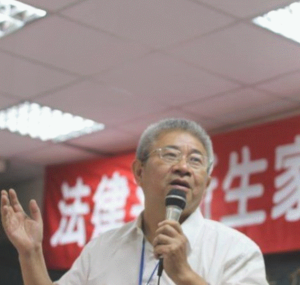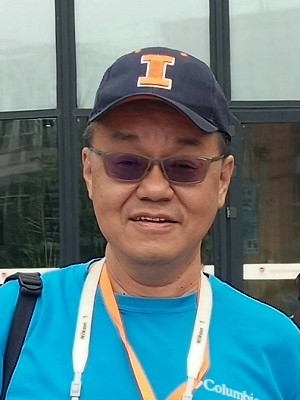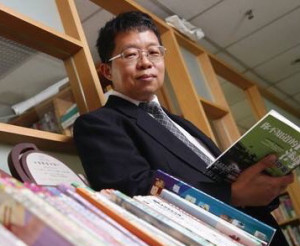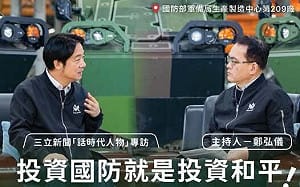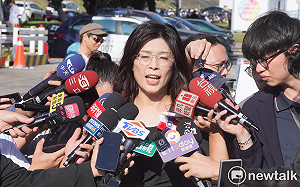阿拉伯:關注貧困與地方發展(中英對照)
Blogging About Poverty And Development In The Arab World
譯者:Leonard(全球之聲) 原作者:Ayesha Saldanha
全球之聲原連結
當前熱搜:規模7強震恐怖畫面曝!新莊宏匯廣場前馬路裂開了 裂縫橫跨斑馬線
近期聯合國報告[PDF檔]指出,阿拉伯地區四成民眾為貧民,2009阿拉伯人類發展報告亦提到,部分阿拉伯國家逾半數民眾生活飢餓困苦,本文整理阿拉伯世界有關貧困與發展的部落格文章。
Two in five Arabs live in poverty, according to a recently released UN report [pdf]. The Arab Human Development Report 2009 says that in some Arab countries, more than half of the population lives in hunger and want. In this post we hear from bloggers writing about poverty and development around the Arab world.
黎巴嫩
Lebanon
去年Rami Zurayk有篇文章提到黎巴嫩最貧困地區:
Last year Rami Zurayk wrote a post about the poorest area of Lebanon:
"Akkar是黎巴嫩最貧困的地區,近期聯合國發展計畫報告統 計,當地63%的家庭都相當貧困,Akkar為農業區,座落於國內極北部,八成民眾皆務農,比例在黎巴嫩居冠,[…]Akkar在不久之前都仍維持半 封建制度,現今社會與經濟關係亦深受歷史影響,[…]造成社會與經濟嚴重不平等,聯合國發展計畫報告亦稱當地失衡狀況居全國之冠。黎巴嫩政府必須為此 負多數責任,因為衛生、教育、農業發展、小型企業等基礎建設的公共投資極少,貧困與不平等導致極端主義與政治暴力猖獗;為了幫助貧民建立永續生計,當地亟 需衛生、教育等基本建設,農業建設也發展不足。"
“Akkar is the poorest district of Lebanon: a recent UNDP report found that 63% of the families are deprived and face serious poverty. Located in the extreme north of the country, Akkar is an agricultural district, with an estimated rural population of 80%, the highest in Lebanon. […] Akkar was under quasi-feudal rule till recent times, and the current social and economic relations are still heavily impregnated with this history. […] This has resulted in tremendous social and economic inequality: Akkar has, according to the UNDP, the highest level of inequality in Lebanon. The Lebanese state bears much responsibility for this situation: public investments in basic infrastructure and services such as health and education but also in agricultural development and small industries have been minimal. Poverty and inequality lead to extremism and to political violence. Major investments are immediately required in the basic sectors, such as health and education, but also in the productive sectors, such as agriculture, in order to help the poor construct sustainable livelihoods.”
巴林
Bahrain
外界提到波斯灣國家時,通常不會聯想到貧困,但民眾之間的生活水準其實落差很大,巴林的Khalid指出:
Poverty does not come to mind when one thinks of the Gulf countries, but in some there are huge differences in living standards amongst citizens. Khalid writes from Bahrain:
"若以每日生活花費未達一美元為標準,或許平均而言,巴林並無赤貧人口,可是這個標準通常用在必須餐風露宿的非洲民眾身上,… 然而巴林有些民眾每日生活花費在五美元以下!有些人每月還得領取132美元的政府救助金!有些巴林居民仰賴善心人士幫忙過活,因為他們連證明自己是巴林公 民的身份證件都搞丟了。
“It may be that, on average, there is no extreme poverty in Bahrain, by the criterion of living on less than one dollar a day – although extreme caution is needed regarding this criterion, which concerns the poor of Africa in particular, and those who sleep on the ground and cover themselves with the sky… Nevertheless, there are Bahrainis living on less than $5 a day! People who get 50 dinars [$132] of [government] assistance! And there are those who live in the Kingdom of Bahrain not on dollars or dinars, but on the charity of good people – because they have lost their identity papers proving they are Bahraini citizens!”
"憲法保障合理生活的意義何在?"
“What is the meaning of a decent life that is guaranteed to citizens by the constitution?!”
摩洛哥
Morocco
Duncan是派駐在摩洛哥的美國和平團志工,今年初他提到自己對當地貧困情況的印象:
Duncan is a Peace Corps volunteer in Morocco, and at the beginning of this year he wrote about his impressions of poverty in the region he is working in:
"不同社群對貧困的想法各異,美國的貧窮線大約是每年18000美元以下,相當於每日50美元,全球貧民標準為每日生活花費不及一 美元;在我的社區裡,民眾生活水平大約介於兩個數字之間,要衡量本地人民的財富較困難,許多人都是農民,過著自給自足生活,農作物都是供自己食用,有些居 民前往大城市工作領薪水,但多數也沒有餘錢拿回家,很多人的主要收入是牧羊出售。[…]就我所知,我的社區從沒有人餓死,有些人也許只有麵包可吃,但 我相信人們總有方式填飽肚子;也有些人出現營養不良狀況,但並不很嚴重;因水源而起的疾病較多,但也未達第三世界的慘況。生活在人口稀疏的山區,代表多數 水源來自山泉,不會出現太多污染威脅,再加上醫療保健資源有限,人們也不常利用手邊資源,導致嬰兒與女性疾病不少,但我也不相信本地嬰兒與女性死亡率高於 他處,我的重點在於社區生活困苦、居民也很貧窮,然而世界還有其他地區景況更糟,以小農或放牧為生不會讓人們致富,但總還有些錢能夠維生。"
“Different communities and groups of people have different ideas about what it means to be poor. In the United States, the poverty line is something like $18,000 per year, which works out to about $50 a day. Worldwide, a person is considered impoverished if he/she lives on $1 per day or less. Here in my community, the people are mostly somewhere in between those two figures. It’s harder to measure people’s wealth here, as most are self-employed farmers whose product is not sold, but consumed within the house. Some men work outside of the community in bigger cities and have a salary, but not much of that money makes it back here. The main source of income generation is herding sheep and goats and selling them when they get big. […] In my communities, no one (that I’ve seen) is dying of hunger. It may just be bread, but I believe that people can always feed themselves. There are some health problems due to malnutrition, but not severe. Water borne illnesses are a problem, but nothing like other parts of the third world. Living in a mountainous, sparsely populated place means that most water is coming from springs without facing too much threat of contamination. As there is little access (and people don’t take advantage of what is available to them) to health care, infant and maternal health is a problem, but I don’t believe that infant/maternal mortality rates are as high as other places. What I’m trying to say is that life in my community is hard and people are impoverished, but there are other parts of the world where it’s much worse. Getting by on subsistence agriculture and herding doesn’t provide a lot of surplus, but people do have enough to get by. “
不過在今年初的文章裡,Cabalamuse顯然較為悲觀:
However, in a post earlier this year, Cabalamuse expressed a more pessimistic view:
"觀光客快樂地在海灘上做日光浴、在時髦餐廳裡用餐,少數摩洛哥菁英享受生活,但無數摩洛哥民眾居住於鄉間,營養不良、貧困又不健 康,謀生出現問題,住家搖搖欲墜,簡直像是山洞,在此末日情景裡,人們入眠時裹著僅有的衣物以免凍死,用錫罐煮食,女性生產時流血過多致死,孩童因現代社 會早以為絕跡的疾病而死,男性絕望無奈,若天氣尚可,他們在乾土地長途跋涉無數小時,才能走到柏油路上。他們和我們住在同一國,現實處境卻天差地遠,當地 唯一的政府象徵,只有那面隨風飄動的破旗。"
“While frolicking tourists sunbathe on beaches and dine in swanky resorts, while a few thousand elite Moroccans are living high on the hog, millions of malnourished, destitute, and sallow Moroccans in remote rural areas scratch the dirt for survival and take shelter in dwellings so sparsely furnished and poorly built that they look like caves. In this post-apocalyptic diorama, they sleep swallowed in whatever clothes and blankets they own to avoid freezing to death; they cook in tin cans; their women bleed to death giving birth; their children die of diseases the modern world thought eradicated; their men are despondent; weather permitting, they trek over xeric dirt roads and down jarring mountain slopes for countless hours and miles to reach a paved road. They share this country with us, but they live a different reality. The only sign of a government they see in their regions is a tattered flag whipped by the wind.”
更多摩洛哥貧困情況請見此文。
For more on poverty in Morocco see this post.
埃及
Egypt
各地擬定的發展計畫讓有些人懷抱希望,埃及的Lozah最近造訪Aswan地區部分青年中心,當地計畫鼓勵女性運用傳統以男性為主的空間:
Nevertheless, the development initiatives that are taking place around the region give hope to some. In Egypt, Lozah recently visited some youth centres in Aswan that are participating in an initiative encouraging girls and women to utilise traditionally male-dominated spaces:
"計程車開在極為顛簸的小巷裡,我環顧想像青年中心出現在路邊的情況,途中還曾經爆胎一次,最後終於抵達青年中心,是棟破敗的兩層 樓建築,走進中心,一群熱情的女性出來迎接,包括中心主任Hagg Sayed,他們告訴我計畫內容,如何鼓勵更多女孩參與青年中心活動,並讓女性參加管理工作。[…]青年中心讓孩子擁有難得的安全空間,讓他們能安心 奔跑玩樂與參加建設性活動;這些中心過去長期因社會觀感,女性不得參與其中,青年中心對女性不宜的想法在全國各地根深蒂固,許多家長都擔心若女孩前往青年 中心,會損及他們的名譽,故在實行這些計畫之前,必須先在地方社區建立信任,[…]才能逐漸讓輿論及看法改觀。
“As the taxi was speeding down the incredibly bumpy alley, I looked around me trying to picture the youth centre that would eventually appear among all this rubble. One flat tire later, we finally made it to the centre, which was really just a very run-down two-story building. I stepped into the centre to be enthusiastically greeted by a group of girls and women, and the director of the centre Hagg Sayed. They proceeded to tell me about the work they’d been doing to get girls more involved in centre activities, and to get women more involved in centre governance. […] These youth centres offer children a much-needed safe space to just be kids, a place where they can run around and play and engage in constructive activities. But these centres have long been non-inclusive of girls, largely due to societal perceptions. The idea of the youth centre as a place unsuitable for girls is deeply entrenched in the community (and probably across the country) and many parents were worried about their daughters’ reputations if they were to become involved in centre activities. That’s why prior to implementing the initiative itself, it was important to first build trust with the local community. […] Gradually, opinions and perceptions changed.
"下一步是讓女性開始運動,[…]今日女性在足球、舉重、桌球等體育項目都屢獲獎牌,過往持質疑態度的男性也出席女性錦標賽, 在場邊熱情加油,只要和女孩們交談,都能看出她們有多麼引以為傲,[…]能夠親眼目睹這些社區的改變,著實令人興奮,我並不是認為一切已經完美,別忘 這是Azwan地區最貧困的村落,甚至是全埃及最貧窮的地區,當地有關貧困、文盲、失業、醫療不足、缺乏潔淨飲用水、污染等問題眾多,與多數埃及社區無 異,這些孩子失去許多事物,故許多權利受到侵犯,但這項計畫透過落實一項重要權力,讓情況稍有改善,至少此刻,這些女孩重新擁有度過童年的權利。"
“The next step was to get the girls involved in sports. […] Today girls are credited with winning numerous trophies in soccer, weight-lifting, and table tennis among others. Furthermore, the once sceptical male members of the centre today attend all the girls’ tournaments, enthusiastically cheering them from the sidelines. Talking to the girls, it was impossible not to notice how proud they were. […] To see firsthand the changes that have occurred in these communities was truly inspiring. This isn’t to say that everything is now perfect there. Keep in mind that these are some of the poorest villages in Aswan, some of the poorest in Egypt. These villages face a whole host of problems related to poverty, illiteracy, unemployment, lack of healthcare, lack of clean water, pollution, and other problems that are common to most Egyptian villages. These children are deprived of a lot of things and so many of their rights are violated. But this initiative has managed to make things a little bit better by fulfilling a very important right: at least now, these girls aren’t deprived of their right to a childhood.”
另一文論及女性在埃及發展扮演的角色。


